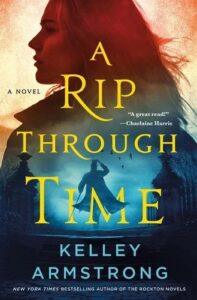What would it be like to travel back in time? That depends on whether you’re ready for it. If you’re hopping into a time machine, you’d likely have a chance to prepare yourself, and that’s certainly the comfortable way to go.
But imagine being flung back in the blink of an eye. One minute you’re in our world, and the next, you’re in another time period. It would be terrifying and overwhelming.
In fiction, though, the narrator is the one tossed into the chaos. We don’t need to worry about how to find food and shelter, how to survive and thrive, how to avoid being thrown into a jail cell or a mental institution. We don’t need to figure out how to lace a corset, how to find hot water for bathing, how to hail a hansom cab…and how to pay for the fare. It’s the narrator who’ll be forced to figure it all out, making mistakes both hilarious and dangerous…and as the reader, we get to experience it vicariously, catching a ride with this poor character hurled back through the ages.
While time travel can take us into the future, I’ve always focused on the past. A Rip Through Time isn’t my first foray into the world of time travel, but I consider the rest to be baby steps into historical fiction, with limited settings and limited interactions with the greater world. My characters found themselves in a grand house or a tiny village, where they only had to convince a few people that they weren’t mad. They weren’t thrust into the wider world to deal with all the challenges there. That meant manageable amounts of research.
Then I decided to try a time-travel mystery… with a modern detective, transported into the body of a housemaid working for an undertaker-turned-early-forensic-scientist in 1869 Edinburgh. That meant researching domestic service, undertaking, law enforcement, medicine, forensics and so much more, all of it in Scotland while most of the resources are English.
I quickly learned that secondary resources aren’t necessarily reliable. I spent the first quarter of the book referring to my local police detective as Inspector McCreadie, based on secondary sources that insisted that was the proper title in both England and Scotland. Then I started poring over firsthand police accounts and contemporary newspapers, only to discover the correct title was Detective.
It’s sometimes said that time travel is a bit of a cheat for historical fiction. Because the narrator isn’t from that period, they can make mistakes (or, more accurately, the author can make mistakes and blame the poor narrator.) Mistakes are certainly a given at the beginning of the story, when the character is new to the world. For example, when my narrator, Mallory, sees Detective McCreadie smuggling a corpse into her boss’s lab late at night, her grasp of history tells her this must be grave robbing for anatomy research. That’s a reasonable assumption…if you don’t know that the 1832 Anatomy Act all but put an end to the “resurrectionist” trade in Britain. The narrator can make errors, but they eventually need to realize their mistakes…which means the writer needs to have done their research. So, yep, time-travel mystery involves just as much research as a historical novel, which is…a lot.
I dove into the research with a determination to get everything right. The deeper I dug, though, the more contradictions I found, the more questions I had and the more impossible it seemed to be certain of the answers I was finding. When I consulted experienced historical novelists, their advice was simple: Do your best. Do as much research as possible, while acknowledging that I’m bound to make mistakes (and to feel horrible about them.) The book had only been out a few days before someone pointed out that I have Mallory changing her boots quite easily…which wouldn’t have been possible while laced into a corset. That’s clearly an area I need to pay more attention to, and the reader who caught it offered excellent advice.
While I’m determined to get it right as much as possible, I also need to remember that this is historical mystery, not historical nonfiction or even historical literature. The history is the setting, not the point of the story.
Rather than making things easier, time travel adds an extra layer of complication with the fantastical element of, well, time travel. Oh, sure, the science is theoretical, so the writer isn’t limited by reality, and that helps. Still, it’s important to know what’s currently happening in the research (for example, recent theories argue against the likelihood of the “butterfly effect.”) So, yep, more research.
Once you understand the prevailing theories, it’s time for world-building fun. How will time travel work in your world? How do people get there? How do they get back? Will they be corporeally transported or will they body swap? Are they traveling to “our” past or an alternate version of it?
Once you determine how your version of time travel will work, how much do you reveal to the reader? Some will want all the rules laid out clearly, but unless you’re writing omniscient point-of-view, there’s rarely any way for the narrator to know the rules. They are experiencing a fantastical event and figuring it out as they go. Does this mean you can take a shortcut and figure it out as you go? Nope. You must know the rules in advance, because you need to apply them consistently. As someone who has written fantasy for decades, I can guarantee that readers will be as upset by world-building inconsistencies as by historical errors.
So, yes, writing time-travel mysteries can be a challenge, but that’s part of the fun of writing, isn’t it? We might not be able to time travel yet, but as authors, we can build time machines for our readers, zipping them off to worlds old and new, filled with wonder and adventure.


















